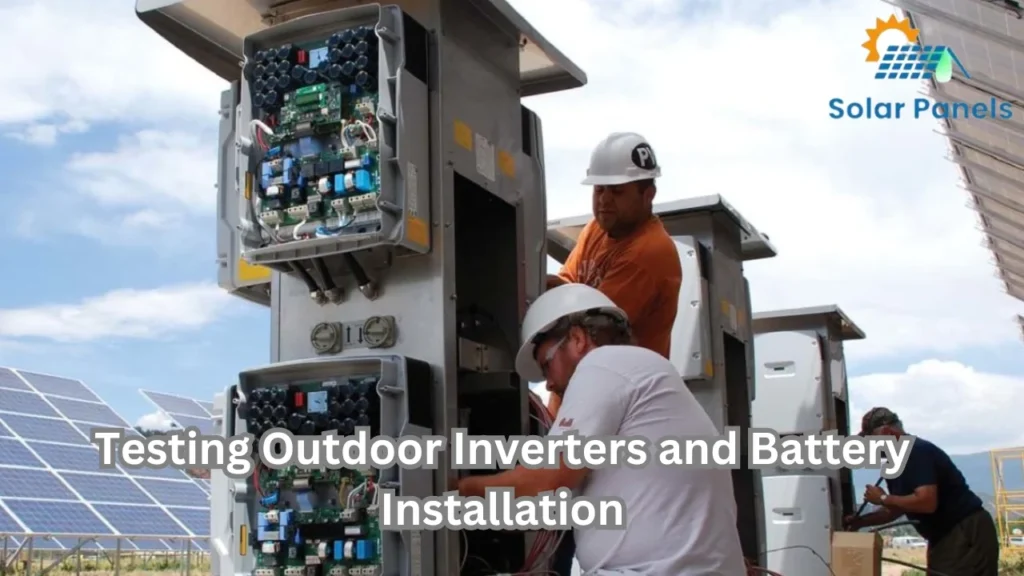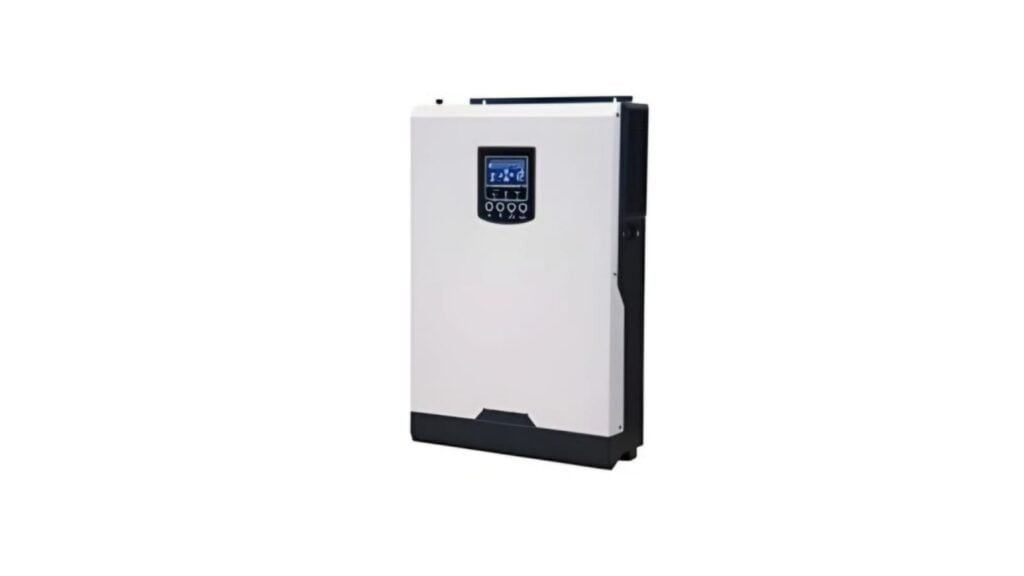Testing Outdoor Inverters and Battery Installation
Solar Inverters and batteries are a crucial component of a solar panel system. It converts the DC power to AC power that you can use to run various electric appliances at home. There are different types of solar inverters – string inverters, micro-inverters, and power optimizers.
Typically, installers place micro-inverters and power optimizers near or under the solar panels. Homeowners can choose to install string inverters indoors or outdoors based on their preferences and the installer’s recommendation. However, it is always advisable to install a solar inverter in a shaded spot, away from direct sunlight and moisture.

Installing solar inverters and batteries outside can offer several benefits
Space Utilization:
Outdoor installation frees up indoor space for other purposes. This can be particularly advantageous for residential properties with limited indoor space or commercial properties where indoor space is at a premium.
Ventilation and Cooling:
Solar inverters and batteries generate heat during operation. Placing them outside allows for better ventilation and cooling, improving their efficiency and lifespan. In outdoor installations, natural airflow helps dissipate heat more effectively than in indoor installations where air circulation might be restricted.
Reduced Fire Risk:
In the event of a malfunction or failure, outdoor installation reduces the risk of fire spreading to indoor spaces, potentially minimizing property damage and ensuring safety.
Easier Installation and Maintenance:
Outdoor installation often simplifies the installation process since it eliminates the need to modify indoor spaces or deal with indoor wiring complexities. It also facilitates easier access for maintenance and servicing, as technicians can work on the equipment without disrupting indoor activities.
Aesthetics:
Some homeowners or businesses may prefer outdoor installation to maintain the aesthetic appeal of indoor spaces. Solar inverters and batteries can be bulky and may not blend well with interior décor, making outdoor installation a more visually appealing option.
Weather Resistance:
Outdoor installation ensures that the equipment is adequately protected from environmental elements, enhancing its durability and reliability.
Optimized Solar Performance:
Placing inverters and batteries outdoors can facilitate better integration with solar panels, optimizing their performance by minimizing energy losses associated with long cable runs or inefficient indoor mounting configurations.
Noise Reduction:
Solar inverters and batteries can generate noise during operation. Outdoor installation can help mitigate this issue by keeping the commotion absent from indoor living or working spaces, contributing to a calmer environment.
Scalability:
To accommodate future expansion of the solar energy system, it is easier to scale outdoor installations. You can install additional inverters or batteries outdoors without making extensive modifications to existing indoor infrastructure.
Overall, installing solar inverters and batteries outside can offer practical, safety, and performance advantages, making it a preferred choice for many solar energy system installations.
Conclusion:
In Conclusion, installing solar inverters and batteries outdoors presents numerous advantages that can enhance the overall efficiency and safety of a solar energy system. From optimizing space utilization and improving ventilation to reducing fire risks and facilitating easier maintenance, outdoor installations can significantly contribute to the longevity and performance of solar components. Additionally, outdoor setups allow for better integration with solar panels, minimize noise disruption indoors, and offer scalability for future expansions. With the availability of weather-resistant equipment designed to endure various environmental conditions, outdoor installation emerges as a practical and effective choice for homeowners and businesses alike. By carefully considering these benefits, individuals can make informed decisions that align with their energy needs and enhance their solar energy experience.
If you want to learn more about solar panels, our blog section is a great place to go.
FAQ’s:
As a rule, inverters designed for outdoor use may be installed either outdoors or indoors, however, indoor inverters can only be installed indoors.
Though Inverter batteries emit hydrogen fumes and other gases these fumes are in safe limits. It is preferred to install them in open areas such as balconies or near windows with proper ventilation but still you can keep them in the bedroom with proper ventilation if space is a constraint at your place.
To connect the battery to the inverter, you just need to connect the terminals of the inverter with the respective terminals of the battery, i.e., positive to positive and negative to negative. As soon as you connect both terminals, you will see that the inverter is getting power.

